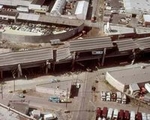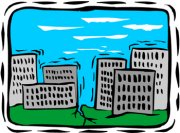
Worksheets and No Prep Teaching Resources
Reading Comprehension Worksheets
Earthquakes

Earthquakes
 Worksheets and No Prep Teaching Resources Reading Comprehension Worksheets Earthquakes |
 Earthquakes |
| edHelper's suggested reading level: | grades 7 to 9 | |
| Flesch-Kincaid grade level: | 8.96 |
|
"Seizing" Up the Quake: The Prediction
By Trista L. Pollard |

|
 1 It starts with a thud and ends with the ground rolling beneath you. Anybody who has experienced an earthquake will tell you how it starts does not matter. You never forget the actual quake. Seismologists and geologists, however, take great interest in how earthquakes begin. Why you ask? It is the prediction of earthquakes that can help save lives and millions of dollars in property damage.
1 It starts with a thud and ends with the ground rolling beneath you. Anybody who has experienced an earthquake will tell you how it starts does not matter. You never forget the actual quake. Seismologists and geologists, however, take great interest in how earthquakes begin. Why you ask? It is the prediction of earthquakes that can help save lives and millions of dollars in property damage. |
Create Weekly Reading Books
Prepare for an entire week at once! |
| Leave your feedback on "Seizing" Up the Quake: The Prediction (use this link if you found an error in the story) |
 |
Earthquakes
|
 |
High School Reading Comprehensions and High School Reading Lessons
|
 |
Science
|